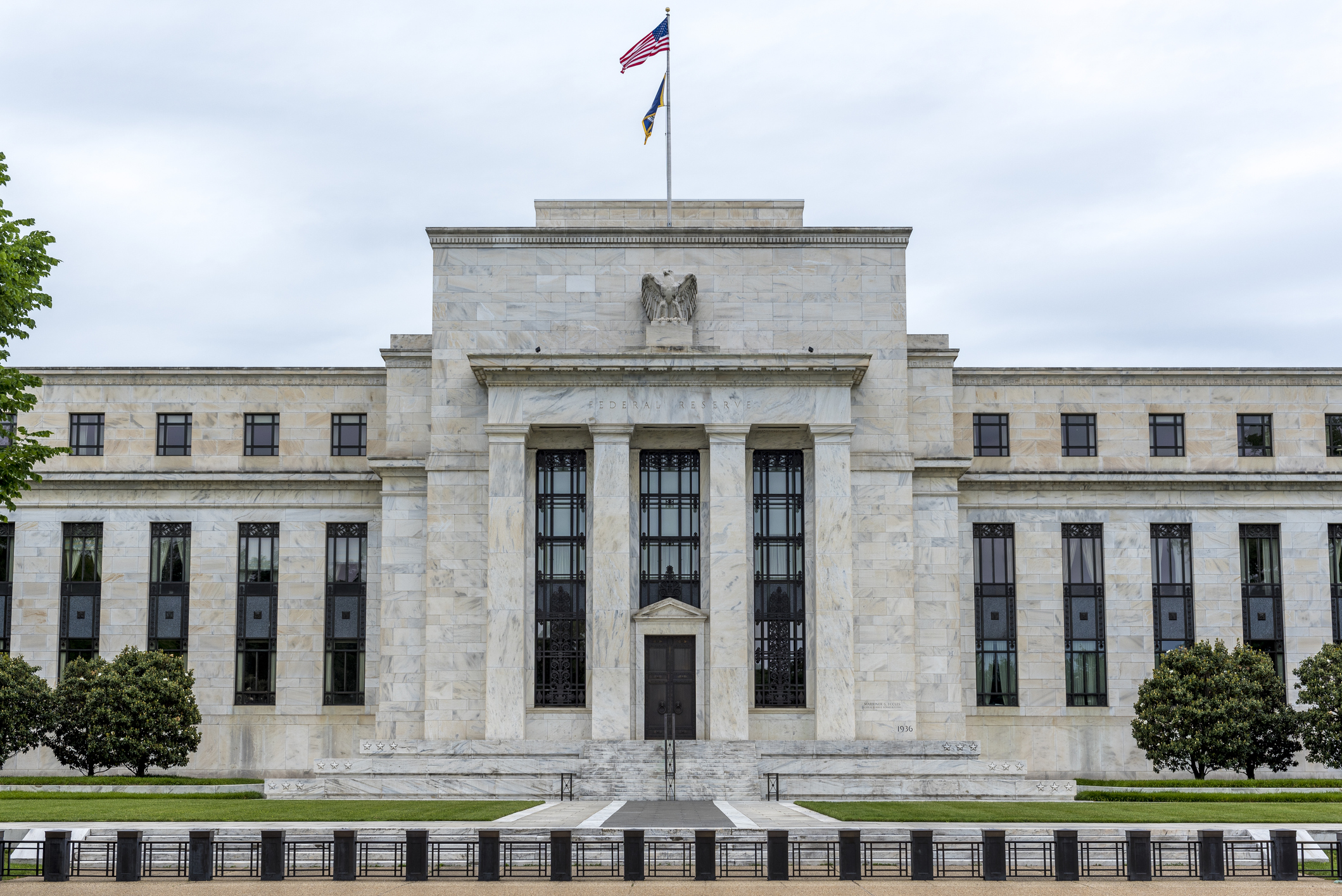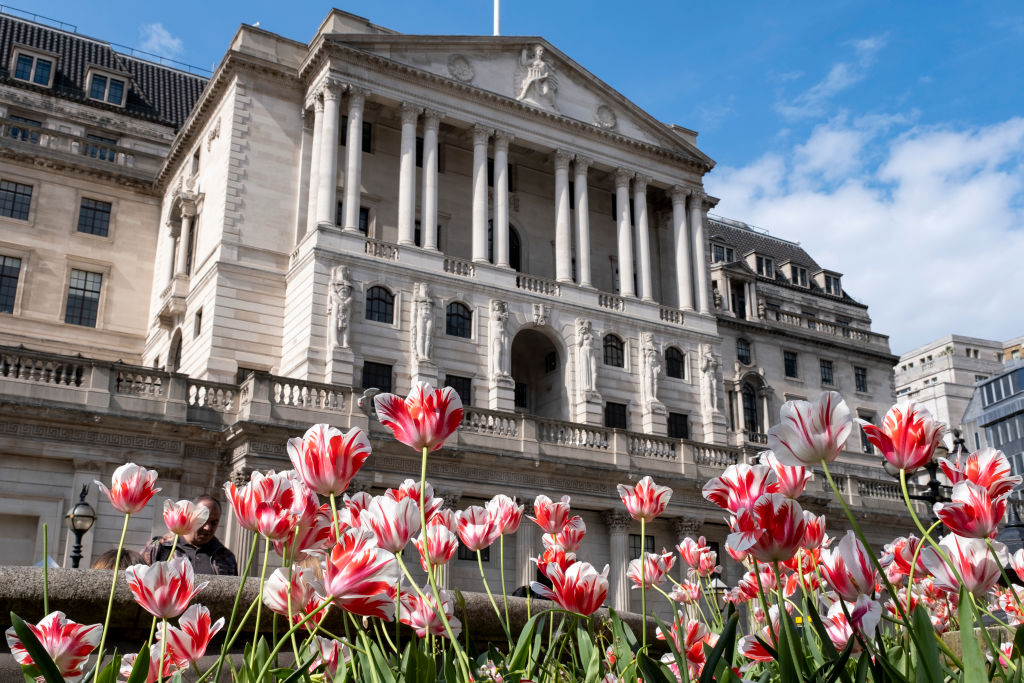What is inflation and how does it affect you?
The latest inflation figure is released each month. What is inflation and how does it impact your personal finances?

Daniel Hilton

Inflation is one of the key economic metrics often mentioned by the government and the Bank of England.
Inflation measures how much prices across different sectors of the economy have risen, from supermarket shops to the cost of jetting off on holiday.
Like most central banks, the Bank of England targets a 2% rate of inflation. This is viewed as optimal for a healthy economy by most economists.
MoneyWeek
Subscribe to MoneyWeek today and get your first six magazine issues absolutely FREE

Sign up to Money Morning
Don't miss the latest investment and personal finances news, market analysis, plus money-saving tips with our free twice-daily newsletter
Don't miss the latest investment and personal finances news, market analysis, plus money-saving tips with our free twice-daily newsletter
But inflation in the UK has been running higher than the central bank’s target for some time now.
The UK’s recent inflationary run began at the start of the cost of living crisis, when inflation quickly climbed from 2% in July 2021 to a peak of 11.1% in October 2022.
After falling from that high and returning to the Bank of England’s 2% target in 2024, inflation stayed far above target for most of 2025 – but now seems to be on the way down.
Inflation fell to 3.2% in November 2025, the most recent month for which data is available. It was the second consecutive fall in inflation after a three month plateau at 3.8% between July and September.
November’s fall was sharper than expected by most analysts – the Bank of England expected inflation to have been 3.4% in November.
The largest contributing factor pushing inflation down was a slowdown in alcohol and food, tobacco, and clothing price growth. This was partially offset by a rise in communications inflation.
But while inflation looks like it is on the way down, we are unlikely to see on-target inflation for some time, with forecasts expecting price growth to settle on target in late 2026 and early 2027.
Alice Haine, personal finance analyst at investment platform Bestinvest, said: “Softening inflation will be comforting for consumers, but they are not out of the woods just yet. While the headline inflation figure has eased, prices are still rising – just at a slower pace.
“The runaway price rises seen during the cost-of-living crisis are already baked into household budgets, and with a potentially painful fiscal statement loaded with tax hikes just a week away, households are understandably nervous.”
We take a closer look at what inflation is, how it is measured, and what it means for your finances.
What is inflation?
Inflation is a measure of how much prices have risen over a given time period. If you spent £1 on a product this time last year and annual inflation now stands at 10%, that same product is likely to now cost £1.10.
It's a useful way of measuring how our spending power has changed over time, but it also has a real-world impact. For example, inflation rates are used to set the amount by which rail fares and some key utility bills go up. The figure also plays a role when determining how much the state pension will increase by.
Economists believe having some inflation (for example the Bank of England's 2% target) is healthy for the economy because it encourages spending and means GDP can grow. However, high inflation can do severe damage to living standards, as we've seen during the cost of living crisis.
Types of inflation
There are two main types of inflation – ‘cost-push’ and ‘demand pull’.
- Cost-push inflation: This type of inflation is caused by an increase in production costs. Imagine cocoa prices rise. This might make it more expensive for a chocolate company to produce chocolate bars. In response, the company can either produce fewer bars or put up its prices. In other words, the price of chocolate bars is pushed up by higher cocoa prices.
- Demand-pull inflation: This type of inflation happens when demand outstrips supply. A good example is what happened after the Covid lockdowns ended. Households had saved up a lot of money while they were cooped up, and used their newfound freedom as an opportunity to splurge. The surge in demand pulled prices up.
Inflation expectations can also create price pressures.
If workers think prices are going to rise rapidly, they might negotiate larger pay rises from their employers. This pushes up costs for businesses by giving them a higher wage bill.
It also gives workers more money in their pocket, making them more likely to spend. Both effects worsen the inflation cycle.
How is inflation calculated?
Every month, the Office for National Statistics (ONS) checks the prices of hundreds of goods and services in an imaginary shopping basket. This is meant to represent the sorts of things that the average British consumer buys – although it is by no means a perfect science.
It includes supermarket basics like bread, milk and fruit, as well as electrical products, clothes, energy bills, flights, train tickets and accommodation.
The ONS updates the inflation basket every year to reflect changes in UK spending habits. Some new additions for 2025 include VR headsets and yoga mats, while oven-ready gammon joints and newspaper adverts have been removed.
Inflation is expressed through several different indices, but the most widely reported is the Consumer Prices Index (CPI). This is an internationally-recognised measure of inflation.
CPI strips out housing costs like council tax and rent payments. Other indices include these, such as the Retail Prices Index (RPI) and the Consumer Prices Index including Owner Occupiers' Housing Costs (CPIH).
Data within the CPI report, such as core and services inflation, is also used by economists to determine how embedded inflation is in the wider economy. These figures tend to be looked at by the Bank of England when it sets interest rates.
How does inflation affect you?
Inflation affects different people in different ways, and some people will have a higher rate of personal inflation than others depending on their lifestyle.
A 75-year-old person reliant on the state pension is likely to spend a greater proportion of their income on heating and food compared to a 40-year-old high flyer on a City of London salary. But no matter who you are, price hikes will affect your budget, and may potentially reduce the number of things you can afford.
Inflation is also used by the government and businesses to set prices. Things like train fares go up in price every year depending on the inflation rate so that, in theory at least, those services don't lose out from the erosion of the value of the pound.
It can work to your advantage. It's worth bearing the rate of inflation in mind when asking for a pay rise, or if you are a landlord and want to increase rents.
In your own personal finances, you will want to ensure the value of your money keeps up with or at least stays close to inflation. To achieve this, you will need to put your money into an inflation-busting savings account.
See our round-up of the best easy-access accounts, one-year savings bonds, regular saver accounts and cash ISAs.
Once you have built up sufficient cash savings, you may also want to consider investing, provided you are willing to lock the money away for at least five years to ride out short-term market volatility. Investing in a diversified portfolio of assets can be a good strategy for beating inflation.
Data from Barclays looking back over the past 120 years or so shows that equities have outperformed cash 70% of the time, based on a two-year holding period. If you extend the holding period to 10 years, it rises to 91% of the time.
We take a closer look at this topic in our beginner’s guide to investing, and in our piece on saving versus investing.
When is inflation data released?
The ONS reveals the latest inflation figures each month. Each release details the inflation rate for the previous monthly period. The data is released at 7am.
The next set of inflation data, covering December, is due to be released on 21 January. For a full list of upcoming reports, see our calendar of CPI release dates.
What is the difference between disinflation and deflation?
Disinflation and deflation are two different things, and understanding the difference between them is important.
Disinflation is the process that takes place when the rate of inflation falls. In a disinflationary environment, prices are still rising, but at a slower rate than they once were. Inflation hit 11.1% at the peak of the cost-of-living crisis, compared to 3.8% today. Prices are rising in both environments, but the rate of price increases is lower today.
Deflation refers to when prices fall over time. As enticing as deflation sounds, it is often regarded by economists as worse than inflation. It can result in reduced consumer spending, as people put off purchasing things in the knowledge prices could be lower next week, next month or next year.
This can cause the economy to slow, potentially resulting in recession and higher unemployment rates as companies lay off staff. Deflation can also make debts more challenging to pay off, as the real value of the debt goes up.
What is stagflation?
During the recent rise in inflation in 2025, some commentators said they believed the UK was at risk of falling into a stagflationary state as GDP growth was minimal while prices kept rising.
Stagflation refers to a predicament in which economic growth is stagnant while inflation is high.
The resulting economic situation becomes challenging, as high inflation means the purchasing power of money is eroded while anaemic economic growth and unemployment mean people have less cash to spend.
The UK experienced a long run of stagflation in the 1970s when inflation reached 24.5% in August 1975. At the same time, the economy was contracting – GDP fell by 2.5% in 1974 and 1.5% in 1975.
Is Britain going to enter a similar state of stagflation in the near future? The answer is that it is probably too early to tell.
While some economic indicators (above-target inflation and low GDP growth) mirror the results you would expect from an economy about to enter stagflation, the situation is still far from being as dire as it was in the 1970s – especially considering that most economists expect inflation to trend downwards throughout 2026.
We take a closer look in our stagflation explainer.
Get the latest financial news, insights and expert analysis from our award-winning MoneyWeek team, to help you understand what really matters when it comes to your finances.

Ruth is an award-winning financial journalist with more than 15 years' experience of working on national newspapers, websites and specialist magazines.
She is passionate about helping people feel more confident about their finances. She was previously editor of Times Money Mentor, and prior to that was deputy Money editor at The Sunday Times.
A multi-award winning journalist, Ruth started her career on a pensions magazine at the FT Group, and has also worked at Money Observer and Money Advice Service.
Outside of work, she is a mum to two young children, while also serving as a magistrate and an NHS volunteer.
-
 5 investment trusts for your pension
5 investment trusts for your pensionInvestment trusts are often a good choice for long term growth and income options, but which ones should you consider for your pension?
-
 Inheritance tax climbdown as agricultural property relief threshold raised
Inheritance tax climbdown as agricultural property relief threshold raisedReforms to agricultural property relief had sparked strong opposition, and the government has now diluted its controversial inheritance tax plans for farmers
-
 Why Scotland's proposed government bonds are a terrible investment
Why Scotland's proposed government bonds are a terrible investmentOpinion Politicians in Scotland pushing for “kilts” think it will strengthen the case for independence and boost financial credibility. It's more likely to backfire
-
 How have central banks evolved in the last century – and are they still fit for purpose?
How have central banks evolved in the last century – and are they still fit for purpose?The rise to power and dominance of the central banks has been a key theme in MoneyWeek in its 25 years. Has their rule been benign?
-
 UK to have highest inflation among advanced economies this year and next, says IMF
UK to have highest inflation among advanced economies this year and next, says IMFThe International Monetary Fund (IMF) says it expects inflation to remain high in the UK, while lowering economic growth forecasts for 2026.
-
 Is Britain heading for a big debt crisis?
Is Britain heading for a big debt crisis?Opinion Things are not yet as bad as some reports have claimed. But they sure aren’t rosy either, says Julian Jessop
-
 'Britain is on the road to nowhere under Labour'
'Britain is on the road to nowhere under Labour'Opinion Britain's economy will shake off its torpor and grow robustly, but not under Keir Starmer's leadership, says Max King
-
 'Governments are launching an assault on the independence of central banks'
'Governments are launching an assault on the independence of central banks'Opinion Say goodbye to the era of central bank orthodoxy and hello to the new era of central bank dependency, says Jeremy McKeown
-
 Why investors can no longer trust traditional statistical indicators
Why investors can no longer trust traditional statistical indicatorsOpinion The statistical indicators and data investors have relied on for decades are no longer fit for purpose. It's time to move on, says Helen Thomas
-
 Live: Bank of England holds UK interest rates at 4.5%
Live: Bank of England holds UK interest rates at 4.5%The Bank of England voted to hold UK interest rates at their current level of 4.5% in March, as widely anticipated, after inflation rose to 3% in January